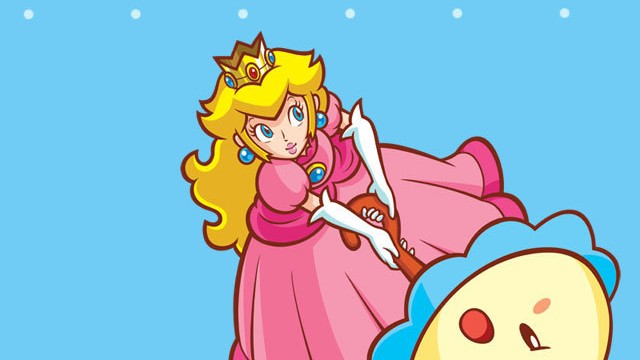
Some video game series are so intricate and inspiring that they practically demand to be explored in different ways. Spin-offs often let players and developers alike scratch the itch of wild experimentation that generally is out of bounds for mainline entries in a beloved franchise. While some spin-offs go off to stand on their own two legs and spawn successful series of their own, some either miss the mark or fail to make a big enough splash to be more than a one-off. Let’s look at some of the more notable spin-offs that either failed, went dormant, or were one-hit wonders!
Donkey Konga
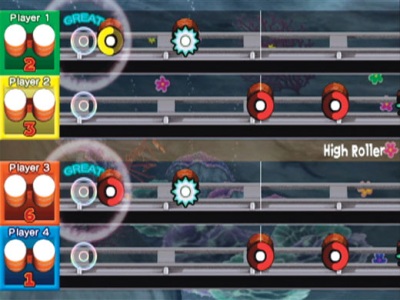
Released: GameCube, 2004
Last Entry: Donkey Konga 2 (GameCube, 2005)
It’s a shame Donkey Konga never made it beyond GameCube, as it’s one of the most innovative and offbeat spin-offs on this list. Donkey Konga was a rhythm game that came bundled with a special set of small bongos which plugged into the system and functioned as an instrument/controller. Much like Guitar Hero, players tapped the bongos to coincide with the rhythm of the music and symbols scrolling across the screen. A built-in mike even recognized the sound of players clapping their hands! The gameplay was fun, and the music selection featured a mixture of Nintendo tunes and popular tracks from artists like Queen and Staind. Though it seemed a shoe-in for multiple sequels, Donkey Konga 3 never made it outside of Japan, and the peripheral and series have yet to make a reappearance on any subsequent Nintendo console.
Did You Know?
Donkey Konga wasn’t the only DK game to utilize those GameCube bongos; Donkey Kong Jungle Beat was a rhythm/platformer that could be played using the unique peripheral! The game was developed by the same team that would go on to create both Super Mario Galaxy games. Needless to say, Jungle Beat was another fun spin-off that never got the love it deserved.
Metroid Prime Pinball
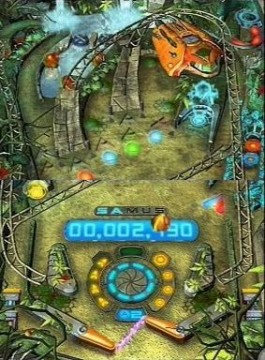
Released: Nintendo DS, 2005
As pointed out by the inimitable Kyle England, Metroid Prime Pinball came out during an interesting time for the Metroid series. Metroid Prime rocketed Samus’s popularity higher than it had ever been, and Nintendo was treating fans to Metroid games across GameCube and Game Boy Advance. When Nintendo DS launched, Nintendo was still riding the Metroid wave, and bundled early units of the handheld with a demo for the upcoming Metroid Prime Hunters to keep fans on the edge of their seats. The game wouldn’t be ready for a while, though, so in the interim Nintendo threw fans a crafty curve ball in the form of Metroid Prime Pinball.
The game is exactly what it sounds like: a pinball game with a Metroid Prime theme. It might seem ludicrous, but developer Fuse Games (who had previously made the middling Mario Pinball Land) crafted something truly special with Metroid Prime Pinball. The game was gorgeous, and the ball physics felt very solid. The little touches stood out, too, whether it was Samus’s Morph Ball being used as the pinball, or the eclectic mixture of classic Metroid tunes throughout. As an added bonus, it even came with a special Rumble Pak that inserted into the Game Boy Advance card slot of DS and DS Lite! Sadly, Metroid Prime Pinball was a spin-off that did things right, but never truly caught on.
Spirit Camera: The Cursed Memoir
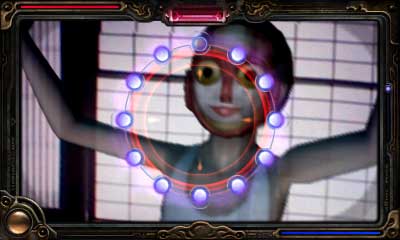
Released: Nintendo 3DS, 2012
The Fatal Frame series had traditionally been a PlayStation mainstay, but in 2012 Nintendo came along and became co-owners of the franchise along with its creator, Koei Tecmo. Though Wii would come to see a couple of Fatal Frame releases in Japan, the only title that would hit Western shores was the 3DS spin-off, called Spirit Camera: The Cursed Memoir. Though similar to Fatal Frame tonally and mechanically, Spirit Camera aimed to take advantage of one of 3DS’s more unique features: its AR capabilities.
Augmented Reality was pushed a great deal in the nascent years of 3DS, so it was only a matter of time before a developer came along to fill the void with a title built around the feature. Koei Tecmo was smart enough to give AR the respect it deserved if it was going to be done right, but the execution was sadly flawed. Spirit Camera revolved on a special booklet that came with the game, which players had to aim the 3DS cameras at in order to play. Though innovative, gameplay suffered from the limitations of AR (like needing a bright light source to interact with the booklet– not the best conditions for a horror game), and Spirit Camera fell short of realizing its potential.
Yoshi Touch & Go
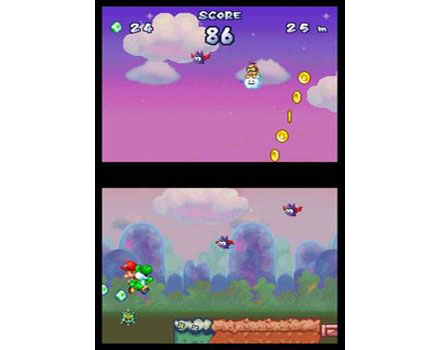
Released: Nintendo DS, 2005
At the outset of DS, developers felt a sometimes irrational need to incorporate the system’s touch screen into their games. I say irrational, because not every game benefited from (or even made sense having) touch screen controls. Games like Ridge Racer DS became too unwieldy with stylus strokes as the primary means of input, and for a time developers grappled with determining which series and types of games could naturally mesh with touch controls. HAL Laboratory hit the nail on the head with Kirby Canvas Curse, but Nintendo came close with another early DS title: Yoshi Touch & Go.
Touch & Go completely removed direct control over Yoshi and Baby Mario from players, instead asking them to draw cloud platforms to guide the duo to their goal. It controlled well enough, but ultimately suffered from a lack of substance. Without a true storyline, gameplay was fun but didn’t amount to much more than feeling like a long minigame. It has its supporters, and it is fun in spurts, but overall Touch & Go didn’t do much more than validate the viability of the touch screen for gameplay, and hasn’t been seen since.
Pokémon Snap

Released: Nintendo 64, 1999
The number of Pokémon spin-off titles that have been released into the wild is almost scary. From Mystery Dungeon to Ranger, or Dash to Rumble, or Conquest to Colosseum, the franchise is one of the most spun-off of Nintendo’s entire catalog, second perhaps only to Mario. There are more than a few that stand a head above the others, but Pokémon Snap holds a special place in the hearts of many fans. Developed by HAL Laboratory (the masterminds behind Kirby’s games), Snap managed to retain all the qualities that made the mainline Pokémon series special, while still establishing its own unique identity.
Collecting and exploring, two of the stronger draws of Pokémon, are at the core of Snap, but players go about doing both in a much different way than normal: by taking pictures! Cast as a young Pokémon photographer named Todd Snap, players cruised along in the Zero-One buggy in an effort to take pictures of as many Pocket Monsters as possible. It was infinitely fun to compel Pokémon out of hiding for a photo op, or discovering new pathways to meander down. Players could even take their snapshots to a local Blockbuster to be printed out! Of all the various Pokémon spin-offs, Snap remains one of the most requested by fans to get a sequel. It seems perfect for Wii U or 3DS, so maybe one day everyone’s wishes will come true!
Mario Paint
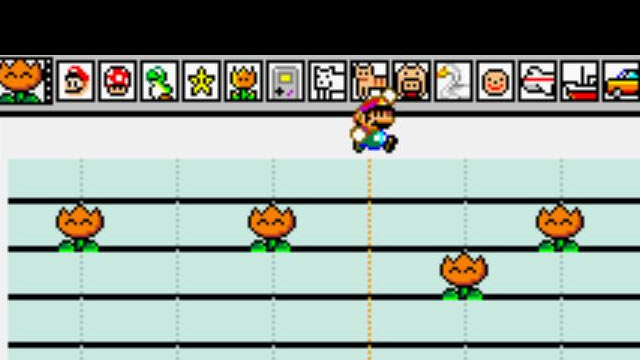
Released: SNES, 1992
If there’s anything that Nintendo has done without fail since it started making consoles, it has been to produce an abundance of peripherals for them. ROB, the NES Zapper, the Balance Board– the list of specialty devices is extensive and varied. Many of them were quite creative, but for one reason or another never got much support outside of a title or two. One such peripheral was the SNES Mouse and Mousepad. Not all that different from a computer’s, the SNES Mouse plugged into the console and could be used to point, click, and manipulate elements on the screen. Nintendo made a more obvious use of the mouse when it ported popular computer game SimCity 2000 to SNES, but the title that really pushed the envelope was the quirky Mario Paint.
Part drawing program, part animation/music development software, Mario Paint gave players an unprecedented amount of creative freedom for a Nintendo game. Players made static pixelated images, simple looping animations, and brief music compositions. There was also a highly entertaining minigame called Gnat Attack where players used the mouse to swing a fly swatter and smoosh the pesky little flies! Packaged in an over-sized box with the SNES Mouse and its large, plastic mousepad, the game was an oddity, for sure, but a heartwarming one that introduced many players to a tiny slice of game development. Mario Paint lives on in spirit through Nintendo’s Art Academy series (it also saw a pseudo-sequel in the Japan-only Mario Artist on Nintendo 64 DD), but nothing has come close to the charm of this under appreciated spin-off.
Super Princess Peach
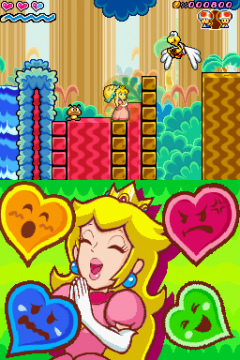
Released: Nintendo DS, 2006
Stepping out of Mario’s shadow, Princess Peach was finally given the chance to headline her own game. Super Princess Peach, created by Starfy developer Tose, was a traditional platformer that seemed to have everything going for it: a developer with quality platforming pedigree, a great look, and a character who many people had been longing to see take center stage. Sadly, though the stars were in the sky, they didn’t quite align. Despite being a fun game, Super Princess Peach didn’t make the greatest impression with fans.
Things started off well enough, as Peach and Mario’s roles were reversed, with the princess on an adventure to save the plumber, for a change (along with Luigi and the Toads!). The gameplay was solid, as Peach used a sentient parasol named Perry to bop through Goombas and float across the screen. Where the game faltered for many, though, was Peach’s powers. Tapping one of four icons on the DS touch screen unleashed a Vibe ability, which were based off of an emotional state. Seemingly innocuous, the feature drew the ire of some fans who felt it portrayed Peach in a negatively stereotypical way (one Vibe sent a torrent of tears streaming out of Peach’s eyes, for instance).
I think Nintendo deserves the benefit of the doubt in this case (who introduced the world to the super strong female lead known as Samus Aran, after all?), but there’s no denying that the company probably could have done a better job realizing the Vibe mechanic. It was nonetheless an entertaining, if somewhat easy, game that should have gotten more play time. As it stands, Super Princess Peach has been Peach’s only shot at flying solo.
Wario Land: Super Mario Land 3
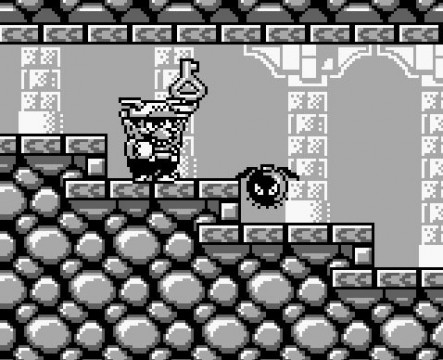
Released: Game Boy, 1994
Last Entry: Wario Land: Shake It! (Wii, 2008)
Few spin-offs are so daring as to bloom within the confines of a core series release, but then, Wario has never been known as a conformist. Super Mario Land technically was a spin-off of Super Mario Bros. (it never did play exactly like the console Mario games), so I guess Nintendo can be forgiven for letting Wario dethrone Mario as its handheld champion. When it came time to develop Mario Land 3, Nintendo had become so smitten with the antihero Wario, that it decided it would become the first Wario Land game, instead. Though reminiscent of red ‘stache’s platformers, Wario Land distinguished itself with more visceral combat and a touch of greed.
Of all the spin-offs featured here, Wario Land is the longest running series of them all. What started with this Game Boy entry continued through to Game Boy Advance’s Wario Land 4, before the series itself spun-off into WarioWare. Though Wario has tried his hand at something other than microgames in the years since (most notably Wario: Master of Disguise on DS and Wario Land: Shake It! for Wii), Nintendo seems to have lost interest in pursuing the Wario Land brand any further. The later entries in the series sported some truly innovative game designs, but even this first outing did a good job of playing in the Mario mold without mindlessly copying it. As far as spin-offs go, Wario Land epitomizes how to do it right; here’s hoping Nintendo comes back to the series again, one day.
Are there any spin-offs that you loved but were sorry to see only a single installment of? Which spin-offs do you think are underrated? Or even overrated? Sound off in the comments!




 ShareThis
ShareThis







Kirby’s Avalanche was and still is my favorite version of Puyo Puyo; too bad I have to load up my old SNES cartridge every time I want to play it. While we’re at it, Tetris Attack, and Pokemon Puzzle League both demand sequels, or at least a re-release.